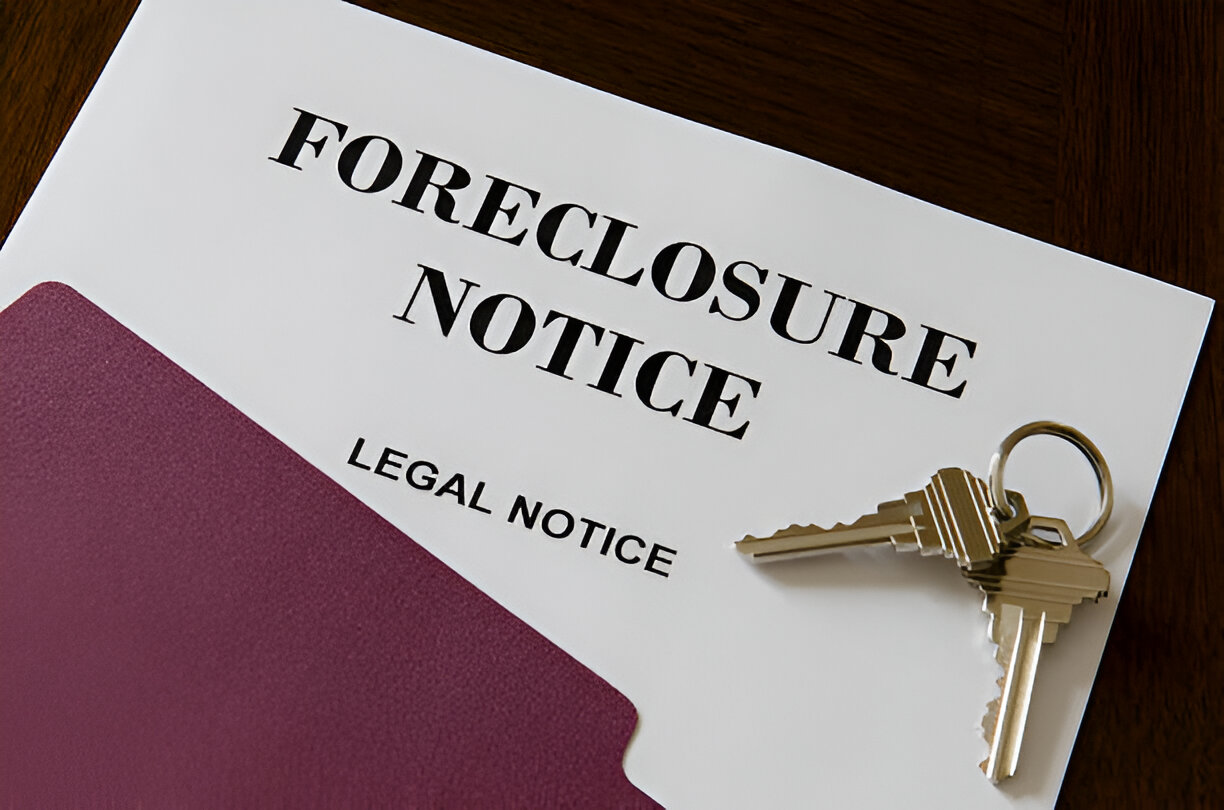Foreclosure doesn’t just take your home—it can drop your credit score by 200 to 300 points and create financial ripple effects that last far beyond the seven years it appears on your credit report. While most people understand that foreclosure damages credit, few realize how the timing, your pre-foreclosure score, and even mortgage servicer errors can dramatically change both the severity of impact and your recovery options. The long term credit effects of foreclosure can be profound and long-lasting. Understanding the long term credit effects of foreclosure is crucial for making informed financial decisions.

The path back to financial stability isn’t just about waiting it out. Your response in the months leading up to and following foreclosure can mean the difference between a decades-long struggle and a strategic two-year recovery plan. From understanding why different credit scoring models react differently to foreclosure, to leveraging servicer mistakes that could halt proceedings entirely, the decisions you make now will determine whether you’re locked out of homeownership for years or positioned to rebuild faster than you thought possible. The long term credit effects of foreclosure should not be underestimated as they can affect various aspects of life.
The Cascading Credit Score Devastation: Understanding the 200-300 Point Drop
Foreclosure operates as a nuclear event within credit scoring algorithms, triggering point losses that dwarf most other negative credit events. The mathematical foundation behind this devastation lies in how credit scoring models weight payment history, which comprises 35% of your FICO score. When foreclosure occurs, it represents the ultimate failure in payment obligations, creating a cascade effect that reverberates through multiple scoring factors simultaneously. This is where the long term credit effects of foreclosure become evident, especially for those with high pre-foreclosure scores.
Your pre-foreclosure credit score serves as the primary determinant of how severely foreclosure will impact your financial standing. Borrowers with excellent credit scores above 780 experience the most dramatic falls, often losing 200-300 points and plummeting into subprime territory. Conversely, those with already damaged credit may see smaller absolute drops of 85-160 points, though this still pushes them deeper into poor credit ranges. The algorithm’s design amplifies punishment for those who had the furthest to fall, operating on the principle that higher-scoring borrowers should have known better. Once you experience foreclosure, the long term credit effects of foreclosure can follow you for years.
The compounding effect emerges when foreclosure combines with the inevitable missed payments, charge-offs, and collection accounts that typically precede the final foreclosure action. Each missed mortgage payment can reduce your score by 60-110 points, while the foreclosure itself adds another layer of damage. This creates a mathematical spiral where multiple negative events cluster together, each reinforcing the others’ impact on your creditworthiness. Thus, understanding the long term credit effects of foreclosure can help you better navigate your financial recovery.
Different credit scoring models respond to foreclosure with varying degrees of severity, creating inconsistencies in how lenders evaluate your risk. FICO scores tend to penalize foreclosure more heavily in the immediate aftermath, while VantageScore models may show slightly less dramatic initial drops but maintain the negative impact longer. These variations mean that different lenders using different scoring models may see vastly different representations of your creditworthiness, creating opportunities for strategic credit applications. Ultimately, the long term credit effects of foreclosure are something that cannot be ignored. Consequently, the long term credit effects of foreclosure often lead to increased scrutiny from lenders.
The hidden impact on credit utilization ratios often goes unnoticed but can be equally devastating. As financial stress mounts during the foreclosure process, many borrowers max out credit cards or close accounts to avoid fees, inadvertently destroying their utilization ratios. When available credit decreases while balances remain high, utilization spikes above the recommended 30% threshold, adding another layer of score damage that persists even after the foreclosure is complete. Paying attention to the long term credit effects of foreclosure is essential for future financial health.
The Seven-Year Shadow: Navigating Long-Term Credit Report Consequences
The seven-year reporting period for foreclosure creates a gradually diminishing shadow over your credit profile, with the impact following a predictable mathematical decay pattern. During the first two years, foreclosure maintains maximum negative impact, essentially creating an automatic denial for most traditional mortgage products. Years three through five show progressive weakening, with the negative mark losing approximately 20-30% of its scoring impact annually. The final two years see accelerated improvement, though the mark remains visible to lenders conducting manual reviews. The lasting long term credit effects of foreclosure can also impact rental applications.
Foreclosure affects different types of credit applications with varying degrees of severity, creating a hierarchy of lending difficulty. Mortgage applications face the strictest scrutiny, with most conventional loans requiring a minimum three-year waiting period and FHA loans requiring three years for borrowers who lost their home to foreclosure. Credit card applications typically show more flexibility, particularly for secured products, while auto loans often approve sooner due to the collateral securing the debt. Personal loans and lines of credit fall somewhere in the middle, with approval chances improving significantly after the two-year mark. Suffice it to say, the long term credit effects of foreclosure are significant.
The distinction between credit report removal and lender perception creates ongoing challenges even after the seven-year period expires. While credit reporting agencies must remove foreclosure entries after seven years, property records remain public indefinitely. Sophisticated lenders conducting thorough due diligence may discover foreclosure history through property searches, particularly for high-value loans or borrowers with inconsistent address histories. This reality means that complete financial rehabilitation extends beyond simple credit report cleanup.
Manual underwriting processes often reveal foreclosure history even when automated systems might approve applications. Lenders reviewing bank statements, tax returns, and employment history may notice gaps or inconsistencies that prompt deeper investigation. The psychological impact on borrowers often manifests as reluctance to apply for credit, creating a self-imposed extended penalty period that persists long after credit scores have recovered. The long term credit effects of foreclosure can vary based on the type of loan you obtain afterwards.
Employment background checks increasingly include credit reviews, particularly for positions involving financial responsibility. Foreclosure can impact job prospects in banking, finance, and security-cleared positions, creating career limitations that extend the economic consequences beyond simple credit access. Rental applications face similar scrutiny, with landlords often viewing foreclosure as a predictor of future payment problems, regardless of improved credit scores. Ultimately, borrowers must be aware of the long term credit effects of foreclosure even after it is removed from their credit report.
Strategic Defense Mechanisms: Mortgage Servicer Errors and Legal Protections
The mortgage servicing industry’s increased scrutiny following the 2008 financial crisis has created new opportunities for homeowners to challenge foreclosure proceedings through servicer error identification. Payment crediting mistakes represent the most common and actionable defense, occurring when servicers misapply payments to fees instead of principal and interest, incorrectly calculate escrow shortages, or fail to credit payments made through third-party processors. These errors create documented discrepancies that can halt foreclosure proceedings and force servicers to recalculate the true amount owed. Moreover, the long term credit effects of foreclosure can entail additional challenges during manual underwriting processes.
Court attitudes toward foreclosure have fundamentally shifted since the foreclosure crisis, with judges now requiring servicers to provide detailed documentation proving their right to foreclose. The “rubber stamp” era has ended, replaced by heightened scrutiny of mortgage assignments, note endorsements, and servicer authority. This judicial evolution means that homeowners with legitimate documentation challenges have significantly better chances of successful defense than they did during the crisis years. For most, the long term credit effects of foreclosure lead to a greater understanding of credit management.
The strategic timing of loss mitigation requests can create powerful procedural defenses against foreclosure. Federal regulations require servicers to evaluate homeowners for loss mitigation options before proceeding with foreclosure, but the timing of these requests matters enormously. Submitting a complete loss mitigation application more than 37 days before a scheduled foreclosure sale triggers automatic protections, while incomplete applications may not provide the same safeguards. Understanding these timing requirements allows homeowners to strategically pause foreclosure proceedings while exploring alternatives. Those who experience foreclosure must remain aware of the long term credit effects of foreclosure. Therefore, contemplating the long term credit effects of foreclosure is vital for financial recovery.
Military service members enjoy enhanced protections under the Servicemembers Civil Relief Act, which requires judicial foreclosure proceedings rather than non-judicial alternatives. Active duty status creates additional procedural requirements that servicers must follow, including court appearances and enhanced documentation standards. These protections extend beyond active duty periods, covering service members for specific periods after deployment ends. The long term credit effects of foreclosure are something many homeowners overlook.
Federal loan programs carry specific loss mitigation requirements that create additional defense opportunities. VA loans include enhanced modification programs, while USDA loans have specific rural development considerations. FHA loans require extensive loss mitigation efforts before foreclosure can proceed, creating multiple opportunities for servicer errors in following required procedures.
- Payment crediting errors: Misapplied payments to fees instead of principal and interest
- Escrow calculation mistakes: Incorrect shortage calculations or force-placed insurance errors
- Documentation failures: Missing breach letters or improper notice timing
- Loss mitigation violations: Failure to evaluate modification options before foreclosure
- Military protection oversights: Inadequate compliance with SCRA requirements for service members
Alternative Exit Strategies: Minimizing Credit Damage Through Proactive Measures
Short sales typically generate 50-100 fewer credit score points in damage compared to foreclosure, though both create significant negative impacts. The key difference lies in lender perception and future mortgage eligibility timelines. Borrowers who complete short sales may qualify for new mortgages in as little as two years with sufficient down payments and credit rehabilitation, while foreclosure typically requires three to seven years depending on the loan program. This timeline difference can represent tens of thousands of dollars in saved rent and earlier wealth building opportunities. Considering the long term credit effects of foreclosure can significantly improve your financial decisions.
Deed-in-lieu arrangements offer the most controlled exit strategy, allowing borrowers to voluntarily transfer property ownership to lenders in exchange for debt forgiveness. The credit impact typically falls between short sales and foreclosure, with most borrowers experiencing 125-175 point score drops. The primary advantage lies in the negotiation opportunity, where borrowers can often secure agreements for positive credit reporting or removal of related negative marks as part of the deed transfer. Thus, understanding the long term credit effects of foreclosure can empower you to take action.
Mortgage modification success rates vary dramatically based on loan type and servicer, with government-backed loans showing significantly higher approval rates than private mortgages. FHA loans demonstrate modification success rates approaching 60%, while conventional loans often fall below 40%. The servicer’s financial incentives play a crucial role, as government programs provide monetary incentives for successful modifications while private investors may prefer foreclosure for insurance recovery purposes.
The strategic timing of alternative exit strategies requires careful consideration of market conditions and personal financial circumstances. Pursuing short sales during strong real estate markets maximizes the likelihood of lender approval, as higher sale prices reduce lender losses. Conversely, deed-in-lieu arrangements may be more attractive during weak markets when lenders face extended foreclosure timelines and maintenance costs.
Tax implications of debt forgiveness create additional considerations that intersect with credit recovery planning. Forgiven mortgage debt may be taxable income under certain circumstances, though the Mortgage Forgiveness Debt Relief Act provides exemptions for primary residences. Understanding these tax consequences helps borrowers make informed decisions about which exit strategy minimizes total financial impact. As many find out, the long term credit effects of foreclosure extend into employment opportunities.
Negotiating removal of related negative marks represents a often-overlooked opportunity during alternative exit arrangements. Lenders may agree to remove late payment histories, collection accounts, or charge-offs as part of short sale or deed-in-lieu agreements. These concessions can accelerate credit recovery by eliminating multiple negative marks simultaneously, rather than waiting for each to age off individually. Being mindful of the long term credit effects of foreclosure can influence your financial path.
Accelerated Recovery Tactics: The Two-Year Rehabilitation Strategy
The two-year rehabilitation timeline represents the mathematical sweet spot where consistent positive payment behavior begins to outweigh foreclosure’s negative impact in credit scoring algorithms. This acceleration occurs because FICO and VantageScore models weight recent payment history more heavily than older negative marks, creating opportunities for borrowers to demonstrate renewed creditworthiness through strategic account management.
Payment behavior during the recovery period requires precision and consistency across all credit obligations. On-time payments on installment loans carry more weight than revolving credit payments in post-foreclosure scenarios, as they demonstrate ability to manage fixed payment obligations similar to mortgages. Auto loans, personal loans, and student loans become powerful rehabilitation tools when managed perfectly, with each on-time payment progressively reducing the foreclosure’s scoring impact.
Credit mix rebuilding must balance the need for positive payment history with the reality of limited credit access following foreclosure. Secured credit cards provide the most accessible entry point, though the credit limits and terms vary significantly among issuers. Store credit cards often approve post-foreclosure borrowers more readily than major credit cards, though their limited utility and higher interest rates require careful management to avoid creating new debt problems.
Strategic credit utilization management becomes critical during the recovery phase, as high utilization ratios can negate the positive impact of on-time payments. Maintaining utilization below 10% across all revolving accounts maximizes scoring benefits, though this requires careful budgeting and often multiple small payments throughout the month rather than single monthly payments. Understanding the long term credit effects of foreclosure is crucial to mitigating its impact.
Authorized user arrangements can provide immediate scoring benefits when added to accounts with long positive histories and low utilization. The key lies in selecting primary account holders with excellent credit management habits and accounts that report authorized user activity to all three credit bureaus. However, these arrangements require trust and clear agreements about usage and payment responsibilities.
Credit monitoring becomes essential for identifying and disputing foreclosure-related reporting errors that can impede recovery. Servicers may continue reporting late payments after foreclosure completion, or collection agencies may report duplicate accounts related to the foreclosed mortgage. Systematic monitoring and dispute processes can remove these errors, accelerating the natural recovery timeline.
Manual underwriting consideration requires positioning yourself as a candidate worthy of human review rather than automated denial. This preparation includes maintaining detailed documentation of income stability, rent payment history, and the circumstances leading to foreclosure. Lenders conducting manual reviews often focus on the borrower’s current financial stability and the specific events that caused the foreclosure, rather than simply the existence of the negative mark.
Conclusion: Your Financial Future Isn’t Predetermined by Foreclosure
Foreclosure’s 200-300 point credit score devastation represents a mathematical challenge, not a permanent sentence. The difference between a decades-long financial struggle and strategic two-year recovery lies entirely in your response during the critical months before and after foreclosure. Understanding the long term credit effects of foreclosure allows you to effectively address issues. Whether you’re defending against servicer errors, pursuing alternative exit strategies like short sales, or executing accelerated rehabilitation tactics, your proactive decisions today determine tomorrow’s opportunities. The seven-year shadow on your credit report doesn’t have to define seven years of financial exile—different scoring models, strategic credit rebuilding, and manual underwriting processes create pathways back to homeownership faster than most borrowers realize. The long term credit effects of foreclosure can also impact your ability to rent a home.

The foreclosure crisis taught us that lenders make mistakes, courts demand accountability, and borrowers who understand the long term credit effects of foreclosure can navigate it successfully. Your pre-foreclosure credit score, the timing of your loss mitigation requests, and even your choice between foreclosure and alternatives like deed-in-lieu arrangements all compound to create vastly different financial futures. The question isn’t whether foreclosure will impact your credit—it’s whether you’ll let that impact control your next decade or use it as the foundation for a more strategic financial rebuilding plan.


